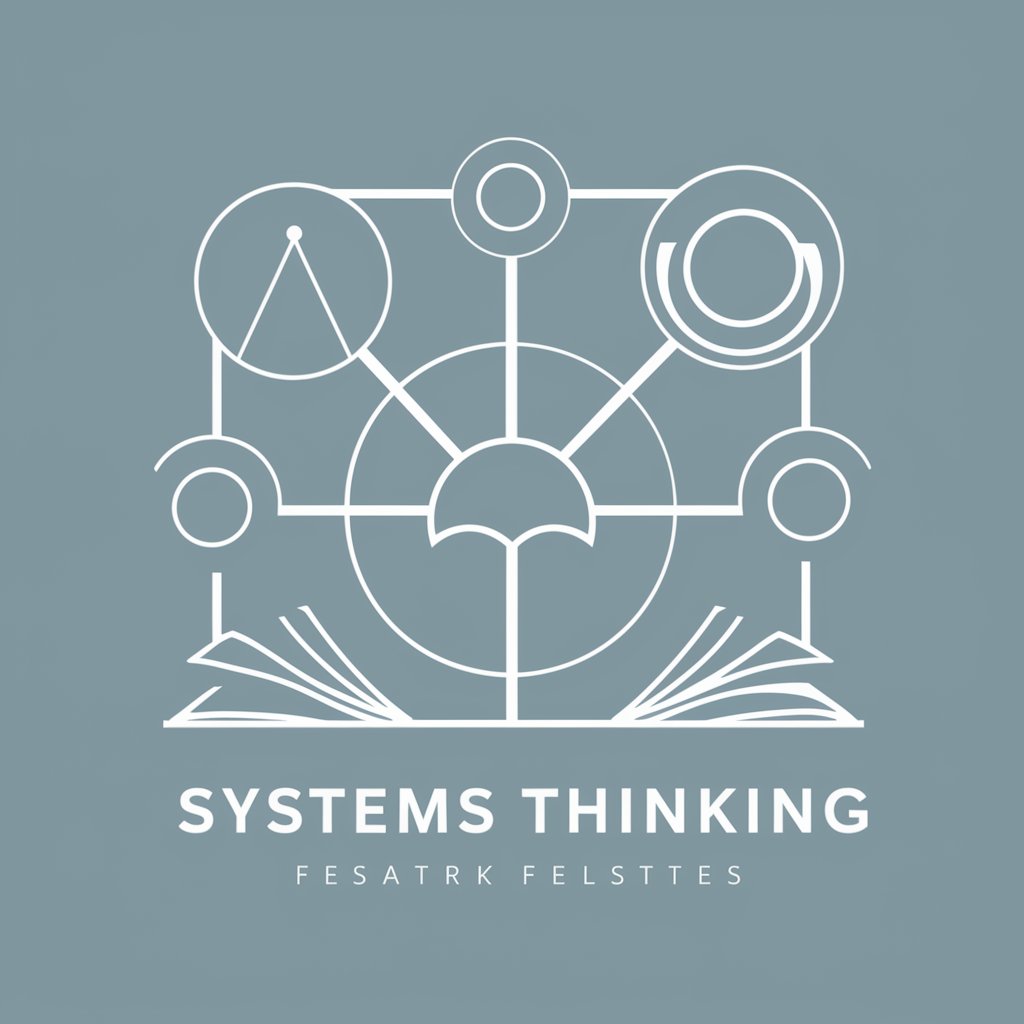Systems Explainer - Comprehensive Systems Thinking Tool

Hello! Ready to explore the world of systems thinking?
Unravel Complexity with AI-Powered Insights
Can you explain how feedback loops function in complex systems?
What are the key principles of the Cynefin Model?
How can systems thinking be applied in educational settings?
What role does software play in modeling dynamic systems?
Get Embed Code
Overview of Systems Explainer
Systems Explainer is a specialized version of ChatGPT, designed to provide in-depth understanding and insights into various aspects of systems thinking. Its core purpose is to explain, in a friendly and confident manner, complex systems and their behaviors. This includes areas like System Dynamics, General Systems Theory, the Cynefin Model, and Learning Organizations. Systems Explainer uses simple explanations, analogies, and examples to make intricate topics more accessible. For instance, it can explain how a feedback loop in an ecosystem works, akin to explaining how a thermostat maintains room temperature. Powered by ChatGPT-4o。

Core Functions of Systems Explainer
Explaining Complex Systems
Example
Describing how global economic systems interact with political systems, using a real-world event like a financial crisis.
Scenario
A user seeks to understand the 2008 financial crisis in terms of system dynamics.
Educational Applications
Example
Detailing how systems thinking can be integrated into educational curricula, particularly in STEM fields.
Scenario
An educator looking to incorporate systems thinking into high school science classes.
Technology and Systems Thinking
Example
Exploring historical and current technologies used in systems thinking, like specific programming languages or software applications.
Scenario
A software developer wants to know the best tools for modeling complex systems.
Real-World Application Guidance
Example
Providing strategies for applying systems thinking to solve real-world problems, such as environmental management or organizational change.
Scenario
An environmental manager needs to understand how to apply systems thinking to sustainable resource management.
Teaching Methodologies
Example
Discussing effective strategies and tools for teaching systems thinking concepts, tailored to different learning environments.
Scenario
A university professor seeks advice on how to effectively teach systems thinking to undergraduate students.
Target User Groups for Systems Explainer
Educators and Academics
Professors, teachers, and researchers who can leverage systems thinking to enhance learning experiences or academic research, particularly in areas like environmental studies, economics, and social sciences.
Business Professionals
Executives, managers, and analysts in various industries who need to apply systems thinking for strategic planning, problem-solving, and organizational development.
Policy Makers and Government Officials
Individuals involved in policy development and public administration, who can use systems thinking to better understand and manage complex societal and environmental issues.
Students and Learners
Individuals seeking to understand complex systems as part of their education or personal interest, particularly in areas like ecology, economics, and sociology.
Technology and Software Developers
Professionals in technology sectors who require an understanding of systems thinking to develop software and tools for modeling and analyzing complex systems.

Guidelines for Using Systems Explainer
Initial Access
Visit yeschat.ai for a free trial without login, also eliminating the need for ChatGPT Plus.
Define Your Query
Clearly articulate your question or topic related to systems thinking, ensuring it's specific and within the scope of System Dynamics, General Systems Theory, or related areas.
Engage in Interactive Learning
Use the interactive capabilities to explore complex systems, ask for examples or analogies, and request deeper insights or simpler explanations as needed.
Explore Educational Applications
Leverage Systems Explainer for educational purposes, such as teaching systems thinking concepts in academic settings or professional training.
Utilize Advanced Features
Take advantage of the tool’s advanced features like discussing historical and current technologies in systems thinking, and applying these concepts in various real-world scenarios.
Try other advanced and practical GPTs
Which Assistant
Discover Your Ideal AI Partner

UX Interpreter
Revolutionizing design feedback with AI

Center of Excellence Copilot
AI-powered Salesforce Excellence Navigator

SEO Buddha
Elevating SEO with Intelligent Insights

CBT Catalyst
Empowering Mental Health with AI

Vanessa Contenty
Empowering Content Creativity with AI

亦仁
Empowering Insights with AI

Tableau Rockstar
Empower your data storytelling with AI.

🎅 Meet Santa Claus
Experience Magic with AI Santa

GPT Builder Expert
Tailor-made AI for every need.

AI 博主 Vito
Empowering Creativity and Efficiency with AI

The Rizz Game
Your AI-Powered Dating Scenario Partner

Frequently Asked Questions about Systems Explainer
What is Systems Explainer best used for?
Systems Explainer is ideal for understanding and discussing complex concepts in System Dynamics, General Systems Theory, and the application of systems thinking in various fields, including education.
Can Systems Explainer help in academic research?
Absolutely, it can assist in academic research by providing insights on systems thinking methodologies, offering analogies for complex theories, and discussing applications in educational settings.
Is Systems Explainer suitable for beginners in systems thinking?
Yes, it's designed to cater to all levels, starting from basic explanations and progressively delving into more complex aspects of systems thinking.
How can Systems Explainer assist in professional development?
Professionals can use it to understand system dynamics in business, learn about learning organizations, and apply systems thinking to improve organizational processes.
Does Systems Explainer cover specific methodologies like the Cynefin Model?
Yes, it includes discussions on specific methodologies such as the Cynefin Model, offering insights into their application and relevance in different contexts.
